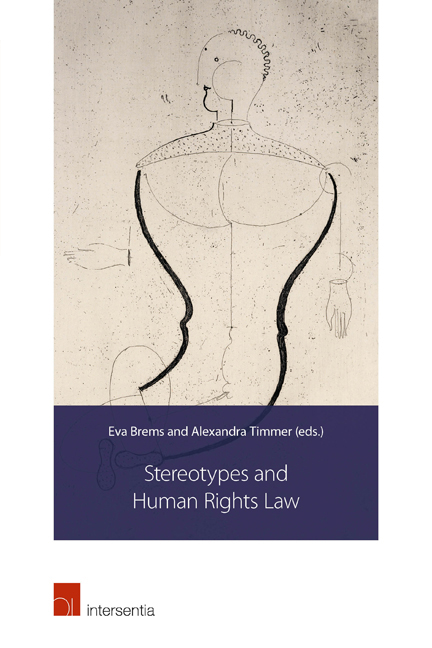Book contents
- Frontmatter
- Contents
- Introduction
- Building Momentum Towards Change. How the UN's Response to Stereotyping is Evolving
- Gender Stereotyping in Domestic Violence Cases. An Analysis of the European Court of Human Rights’ Jurisprudence
- Gender Stereotyping in the Case Law of the Inter‑American Court of Human Rights
- ‘My Sense of Humanity Has Gone Down the Drain’. Stereotypes, Stigma and Sanism
- Racial Stereotypes and Human Rights
- The Head of the Woman is the Man. The Failure to Address Gender Stereotypes in the Legal Procedures around the Dutch SGP
- Gender Stereotyping in the Military. Insights From Court Cases
Introduction
Published online by Cambridge University Press: 22 December 2017
- Frontmatter
- Contents
- Introduction
- Building Momentum Towards Change. How the UN's Response to Stereotyping is Evolving
- Gender Stereotyping in Domestic Violence Cases. An Analysis of the European Court of Human Rights’ Jurisprudence
- Gender Stereotyping in the Case Law of the Inter‑American Court of Human Rights
- ‘My Sense of Humanity Has Gone Down the Drain’. Stereotypes, Stigma and Sanism
- Racial Stereotypes and Human Rights
- The Head of the Woman is the Man. The Failure to Address Gender Stereotypes in the Legal Procedures around the Dutch SGP
- Gender Stereotyping in the Military. Insights From Court Cases
Summary
Stereotyping has emerged as a human rights law topic. Stereotypes assign certain roles and characteristics to a group. Examples include the notions that women are nurturing and weak, men combative and powerful, and gays promiscuous and unsuited to parenting. Such stereotypes can deeply impact the enjoyment of human rights. They reinforce inequality and discrimination. Several human rights treaties therefore mention that states are under an obligation to combat stereotyping. Examples include Article 5(a) of the Convention on the Elimination of All Forms of Discrimination against Women (CEDAW); Article 8(b) of the Convention on the Rights of Persons with Disabilities (CRPD); and Articles 12 and 14 of the Council of Europe Convention on preventing and combating violence against women and domestic violence (the Istanbul Convention). Increasingly, human rights courts and treaty bodies – including the European Court of Human Rights (ECtHR), the Inter-American Court of Human Rights (IACtHR), the CEDAW Committee, and the Committee on the Elimination of Racial Discrimination (CERD) – voice concerns about stereotyping and insist that states should not enforce harmful stereotypes.
Nevertheless, stereotypes have so far received little sustained consideration from human rights law scholars. The literature has largely been confined either to domestic borders (ie focusing on American equal protection law), or to single human rights treaties (typically CEDAW), or to a single ground (namely gender). The stereotyping concept is markedly further developed in the context of gender discrimination compared to other grounds of discrimination, raising the question how well the concept travels to other grounds. This volume is innovative by taking a broad view on the human rights dimensions of stereotyping. The book investigates different stereotyping grounds – namely race, gender, and disability – as well as different human rights bodies and courts, including the UN system, the ECtHR and the IACtHR.
STEREOTYPING AS A HUMAN RIGHTS ISSUE: CROSSCUTTING THEMES
As a human rights issue, stereotyping raises several important crosscutting themes. We will discuss three of them below. The first theme is how to conceive of stereotypes, the second is how to distinguish harmful from acceptable stereotyping, and the third is the role of courts and treaty bodies in addressing stereotypes. These are all contested topics, which the authors in this volume address in different ways.
- Type
- Chapter
- Information
- Stereotypes and Human Rights Law , pp. 1 - 10Publisher: IntersentiaPrint publication year: 2016



